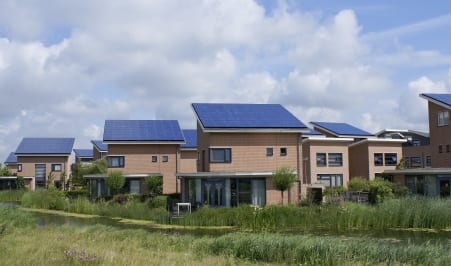There’s a lot going on in the energy storage space at the moment, and nowhere was this more evident than at last week’s gathering of the global solar industry at the Solar Power International conference in Las Vegas.
 As if to drive home the increasingly inextricable link between solar and storage, this year’s SPI seems to have been most notable for its battery and energy storage developments, including promising new product launches, and announcements about new joint ventures, new “giga” factories, and technology cost reductions.
As if to drive home the increasingly inextricable link between solar and storage, this year’s SPI seems to have been most notable for its battery and energy storage developments, including promising new product launches, and announcements about new joint ventures, new “giga” factories, and technology cost reductions.
This week, as reported here, Swiss storage startup Alevo revealed it was setting up a new gigawatt-scale battery production facility in a former cigarette factory in North Carolina having signed a deal with China-ZK to sell its products and technology in China.
The 3.5 million square-foot plant, will mainly produce utility-sized batteries to store electricity generated by wind and solar plants. Alevo’s lithium-iron-phosphate (LiFePO4) batteries can be charged in 30 minutes and discharged for over 40,000 cycles, making them a serious competitor with the likes of Tesla in this space.
On Wednesday, Californian solar leasing pioneer Sunrun announced a partnership with Washington-based off-grid specialists Outback Power, starting with a pilot project offering energy storage for selected Sunrun customers.
Sunrun’s rooftop solar customers – there are more than 30,000 of them across 12 US states – will test Outback’s weather-resistant batteries and inverters on their home systems, paving the way for an expansion of residential energy storage.
Another partnership announced this week is the manufacturing agreement between advanced energy storage pioneer Imergy Power Systemsa and multinational manufacturer Foxsemicon, to make modular flow batteries for Imergy’s rapidly expanding customer base.
The deal will see Foxsemicon supply Imergy with manufacturing, assembly and test services for Imergy’s complete Energy Storage Platform product portfolio, which includes products ranging from 5kW/15kWh to 250kW/1MWh.
Applications would include grid-connected commercial buildings and smart micro grids, as well as utility-scale load-shifting applications for solar and wind, to better match peak load and provide electricity regardless of grid status.
And yet another interesting announcement this week has come from ViZn Energy Systems – a Massachusetts-based large-scale energy storage pioneer – which revealed its zinc redox flow battery technology had been tapped as a viable substitute for basic cycle peaking power plants, in a white paper by Energy Strategies Group (ESG), a specialist consultancy in grid-scale energy storage technologies.
“ViZn Energy’s flow battery is an economically attractive substitute for many simple cycle gas-fired combustion turbine peaking plants, especially when deployed on a distributed basis and owned and operated by the electric utility,” ESG principal and author of the white paper, Chet Lyons.
Lyons noted that by using ViZn Energy’s zinc/iron flow battery, the CapEx for a substitute 4-hour storage-based peaker plant was projected to be $1,390 per kW by 2017, or $348 per kWh of installed capacity.
“At that price point,” he said, “storage will be directly competitive with some conventional simple cycle CTs. For CTs at the higher end of the CT cost range, ViZn Energy’s 4-hour storage will be a clear winner by 2017.”
Most notable among the SPI product launches, according to PV Magazine, was Enphase’s AC Battery unit, powered by Daiwa House-backed ELIIY Power lithium-ion chemistry, and offering 1.2 kWh of energy storage with a 275 Watt to 550 Watt power output. Pilot testing of the new product will begin soon in the US, Europe and Australia and Enphase plans to begin shipping in the second half of 2015.
Among the big SPI energy storage announcements, aqueous lithium-sodium battery makers Aquion Energy revealed plans to ramp up production next year toward their 240MW per hour capability. Aquion’s six-stack module, which is roughly the size of a refrigerator, can produce 10kWh, while its larger 100kWh cube module was recently deployed in Hawaii, where 40 units will be shipped during first quarter 2015.
Other SPI highlights included California-based smart tech company Stem – which recently teamed up with Japanese solar giant Kyocera – being awarded a $935,000 SunShot grant from the US DoE to develop its advanced software platform for energy storage evaluation and automated system control – an innovation specifically designed to improve the application of distributed storage in areas with high PV penetration.










